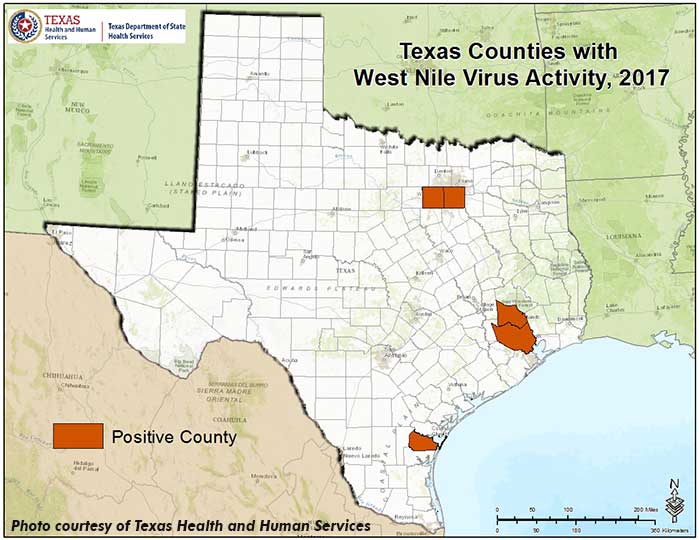Texas’ first West Nile case of the year has been reported to the Department of State Health Services (DSHS). An adult woman from Montgomery County developed the neurologic form of the disease in late April.
As mosquito counts climb, the state of Texas is appealing to the public to help with the effort to stop mosquito-borne diseases by preventing mosquito bites and eliminating areas where mosquitoes can reproduce.
“Diseases like Zika and West Nile remain threats in Texas, and we need everyone to do their part to protect themselves, their families and their communities,” DSHS Commissioner Dr. John Hellerstedt said. “These are simple steps, and if people take them consistently, they will go a long way toward reducing the number of cases of either disease transmitted in Texas.”
To help stop the spread of Zika and West Nile, people should:
- Use EPA-approved insect repellent every time they go outside.
- Cover exposed skin with long pants and long-sleeved shirts whenever possible.
- Use air conditioning or window and door screens that are in good repair to keep mosquitoes out.
- Limit outdoor activities during peak mosquito times.
- Remove standing water in and around homes, including in trash cans, toys, tires, flower pots and any other containers so mosquitoes can’t lay their eggs.
- Use a larvicide in water that can’t be drained to keep mosquitoes from developing.
In 2016, Texas reported 370 human cases of West Nile, including 18 deaths.
Most who get infected don’t get sick, but about 20 percent will experience symptoms like headaches, fever, muscle and joint aches, nausea and fatigue. In about one percent of infections, the virus can affect the nervous system, causing neurological symptoms such as disorientation, tremors, convulsions, paralysis, coma and even death.
On the other hand, the illness Zika causes is usually mild, but the virus can have a profound effect on unborn babies whose mothers are infected during pregnancy. In some cases, it can cause severe birth defects like microcephaly, a defect leading to a small head because the brain doesn’t grow sufficiently during pregnancy.
Texas has had 334 cases of Zika virus disease since the virus became a concern in the Western Hemisphere in 2015. The vast majority have been contracted abroad, though six cases were transmitted by mosquitoes in Brownsville late last year.
With transmission occurring in Mexico, the border region remains the most likely area in Texas for Zika to spread, though much of the state is at risk due to the distribution of the mosquitoes that transmit the virus.
DSHS continues to be on guard for Zika by recommending expanded testing that aims to identify cases transmitted within Texas, so state and local governments can respond quickly to stop the spread.
DSHS Zika testing recommendations, insect repellent information and more is available at TexasZika.org. Texas recommends testing pregnant women who have traveled to areas with ongoing Zika transmission and anyone statewide with at least three of the four most common Zika symptoms: rash, fever, joint pain and conjunctivitis (eye redness). DSHS also recommends all pregnant women living Cameron, Hidalgo, Starr, Webb, Willacy and Zapata counties be tested along with anyone in those counties who has a rash plus one other Zika symptom.

